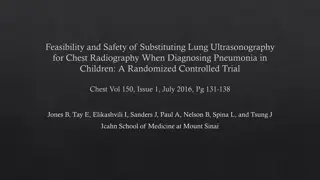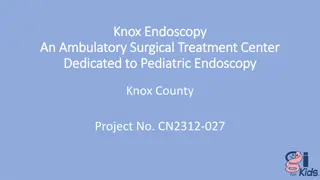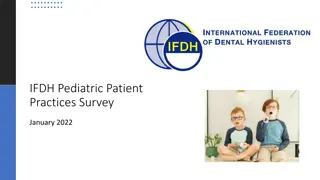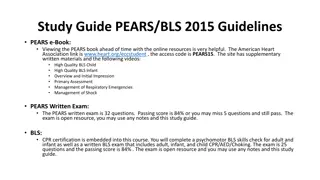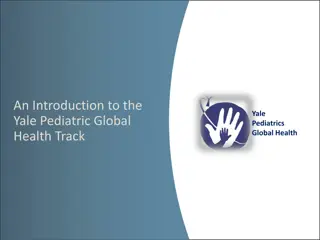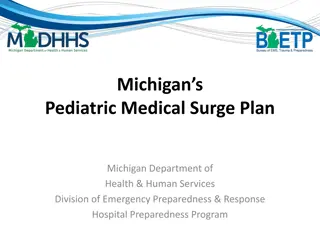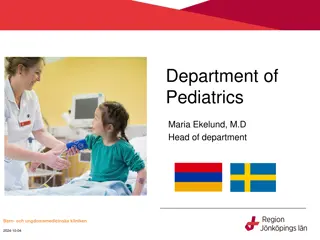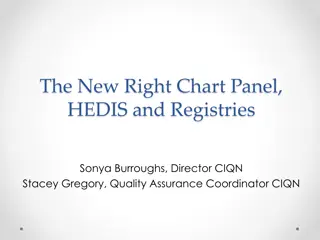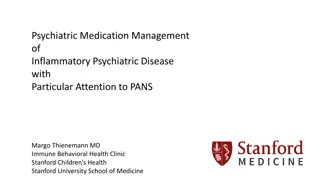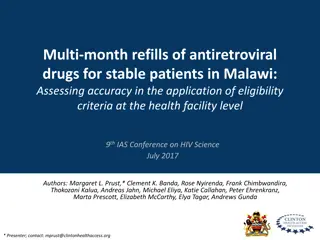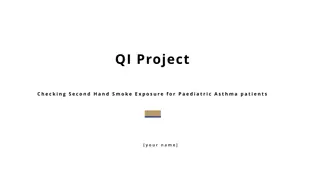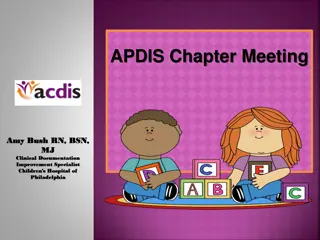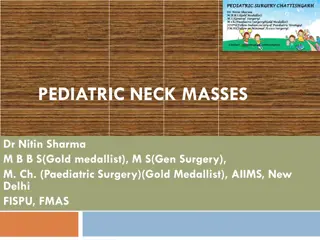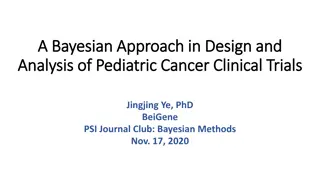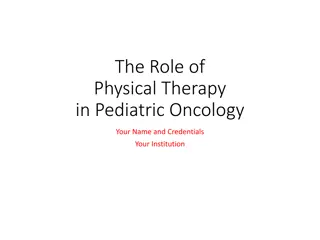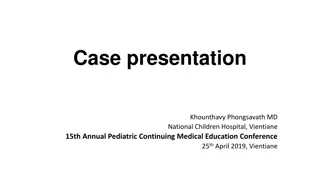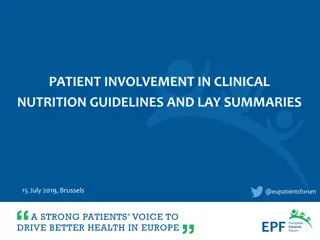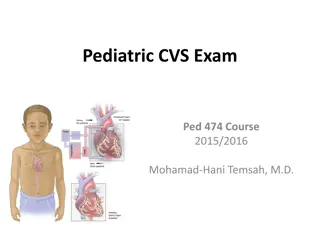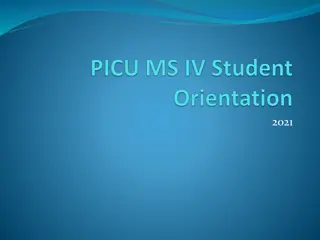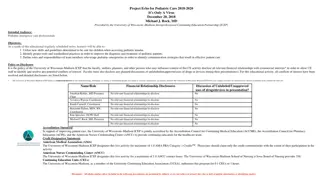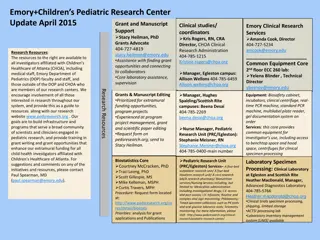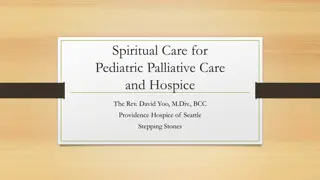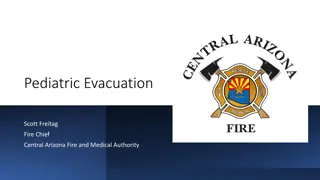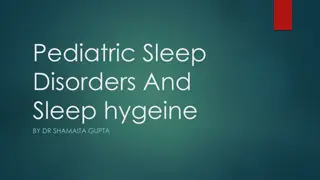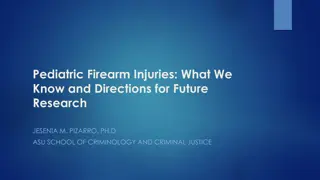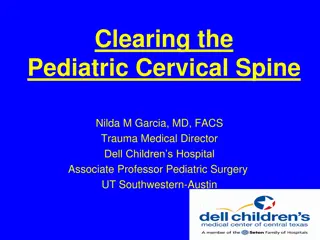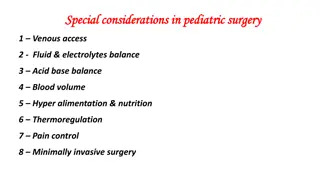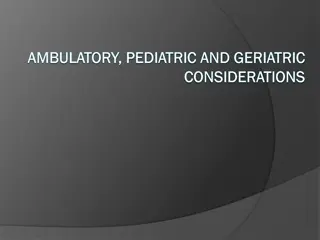Unraveling a Complex Case: Pediatric Patient with Multi-System Involvement
A 10-year-old male presents with a cascade of symptoms including vomiting, hiccups, weakness in all limbs, facial deviation, respiratory difficulty, and more. Despite no fever or injury history, the child exhibits troubling signs, prompting hospital admission. Neurological assessments reveal facial palsy and absent gag reflex. This intricate case involves upper respiratory infection, urinary retention, and other concerning factors necessitating a comprehensive diagnostic approach.
Download Presentation

Please find below an Image/Link to download the presentation.
The content on the website is provided AS IS for your information and personal use only. It may not be sold, licensed, or shared on other websites without obtaining consent from the author. Download presentation by click this link. If you encounter any issues during the download, it is possible that the publisher has removed the file from their server.
E N D
Presentation Transcript
Dr Madhumita Basu Junior Resident, Paediatric Medicine, RG Kar MCH
A 10 year old male child from Basirhat Repeated episodes of vomiting accompanied by hiccups and nausea
Weakness of all 4 limbs thus inability to walk Deviation of angle of mouth towards right and difficulty in swallowing Urinary retention
Respiratory difficulty sets in by the next day Child gets admitted to the peripheral Hospital
The child had one episode of upper respiratory tract infection 7 days ago
Respiratory difficulty Deviation of mouth and difficulty in swallowing Weakness of all 4 limbs & urinary retention Nausea, vomiting and hiccups Upper respiratory tract infection Day 0 Day 3 Day 7 Day 8 Day 9 Day 10
There was no history of fever, head injury, or history of Contact of tuberculosis Vaccination Encephalopathy Bull neck Abdominal pain with haematuria Dog bite or pesticide ingestion No history of previous episodes
Higher functions were normal Anaemia/Cyanosis/Jaundice/Clubbing/ Odema/Lymph nodes- Absent Skin-No abnormality Vitals -Stable
Conscious and oriented Memory intact Speech -slurred and comprehended only by mother
I to VI and VIII,XI and XII- Normal VII-The child had left sided facial palsy of lower motor neuron type; IX and X-Pharyngeal gag reflex was absent
No wasting of muscles seen Tone: Hypotonia in all 4 limbs LL>UL Power: A)Upper limb- Grade 1 B)Lower limb- Grade 0 Reflexes: Both superficial reflexes and deep tendon reflexes were absent Plantar- bilateral extensor Sensory level-absent
Cerebellar signs: absent Speech: Slurred Meningeal signs were absent Spine: No localized swelling or tenderness
Respiratory system- Upper respiratory tract- Flaring of alae nasi present Lower respiratory tract- Tachypnoea Single breath count 14
CVS- No abnormality detected GI System- No abnormality detected
10 year old male child with acute onset quadriparesis and left sided lower motor type facial nerve palsy with bulbar involvement, respiratory difficulty, bladder involvement and absent reflexes with extensor plantar bilaterally
Viral encephalomyelitis? Brainstem or Bickerstaff s encephalitis? ADEM? Neuromyelitis optica spectrum disorder? Multiple sclerosis? SLE/Vasculitis?
Complete blood count Hb WBC N L E M B Platelets Complete blood count 11.4 gm/dl 9700/c.mm 40% 55% 04% 01% 0% 3,58,000/c.mm
CRP was not significantly raised 1.2 mg/dl(normal <1 mg/dl) Serum electrolytes were normal Anti-DS DNA and ANA were negative
CBG Cell type Cell count Protein Sugar chloride ADA CBG 96 mg/dl All lymphocytes 5 cells/c.mm 54 mg/dl 84 mg/dl 110 mmol/l Negative 96 mg/dl
Cervical dorsal MRI showed a longitudinally extensive lesion spanning three contiguous(2nd,3rd and 4th) vertebral segments predominantly involving gray matter Hyperintensity in the region of area postrema
Hyperintense lesion in the bulbar region lateralized to the left
Optic neuritis was ruled out by negative Visual Evoked Potential test
The longitudinally extensive lesion extending over three vertebral segments pointed towards NMOSD
CORE CLINICAL CHARACTERISTICS 1.Optic neuritis 2. Acute myelitis 3. Area postrema syndrome: episode of otherwise unexplained hiccups or nausea and vomiting 4. Acute brainstem syndrome 5.Symptomatic narcolepsy or acute diencephalic clinical syndrome with NMOSD-typical diencephalic MRI lesions 6.Symptomatic cerebral syndrome with NMOSD- typical brain lesions
DIAGNOSTIC CRITERIA FOR NMOSD WITHOUT AQP4-IGG OR UNKNOWN AQP4-IGG STATUS 1. At least 2 core clinical characteristic occurring as a result of one or more clinical attacks and meeting all of the following requirements: 1. At least 1 core clinical characteristic must be optic neuritis, acute myelitis with LETM, or area postrema syndrome 2. Dissemination in space (2 or more core clinical characteristics) 3. Fulfilment of additional MRI requirements, as applicable 2. Negative test for AQP4-IgG using best available detection method, or testing unavailable 3. Exclusion of alternative diagnoses(4)
The lesion in the cervical segments explains the respiratory difficulty(C3,C4) The left sided bulbar lesion can explain the lower motor neuron type facial palsy Arreflexia is possible in stage of spinal shock Ascending tracts for bladder sensation are affected due to the cervical lesion
It is an autoimmune disease highly specific autoantibody of IgG1 subtype against aquaporin-4 localized to the foot processes of astrocytes as well as near the nodes of Ranvier Ab(IG1)binds to the extracellular loops of AQP4 and activates C5-C9 During attacks of myelitis CSF levels of IL-6(a proinflammatory cytokine) and GFAP(glial fibrillary acidic protein) are raised
NMO is a typically recurrent disease, MOG(Myelin Oligodendrocyte Glycoprotein) Ab positive NMOSD is more common in children and can be monophasic In untreated cases death from respiratory failure patient may present with blindness permanent paralysis
The child was treated with Inj. Methylprednisolone for cervical myelitis at 30 mg/kg/day for 5 days that was tapered orally over 10 days. The child was able to walk with a little support. Bladder sensation returned. Tone and power of limbs was restored Child could swallow solid diet.
Prognosis as to chances of relapse along with blindness were explained and the patient was discharged with advice to follow-up
Plasma exchange IVIG 2 gm/kg over 2-5 days Repeat course of steroids Rituximab (acute and relapse) Mycophenolate mofetil Eculizumab(Monoclonal Ab against C5) Trials in children with Satralizumab, a humanized monoclonal Ab
Neurological cases may prove to be a diagnostic dilemma but an analysis of the same might benefit even if costly investigations are not be accessible Early diagnosis helps to modify the course of disease and prophylaxis may prevent relapses
Kliegman, R. (2020). Nelson textbook of pediatrics (Edition 21.). Philadelphia, PA: Elsevier. Kasper, Dennis L.,, et al. Harrison's Principles of Internal Medicine. 19th edition. New York: McGraw Hill Education, 2015. Spillane, John A, and Edwin R. Bickerstaff.Bickerstaff's Neurological Examination in Clinical Practice. Oxford, OX: Blackwell Science, 1996. Print. Wingerchuk DM, Banwell B et al; International Panel for NMO Diagnosis. International consensus diagnostic criteria for neuromyelitis optica spectrum disorders. Neurology. 2015 Jul 14;85(2):177-89. doi: 10.1212/WNL.0000000000001729. Epub 2015 Jun 19. PMID: 26092914; PMCID: PMC4515040. 1. 2. 3. 4.






